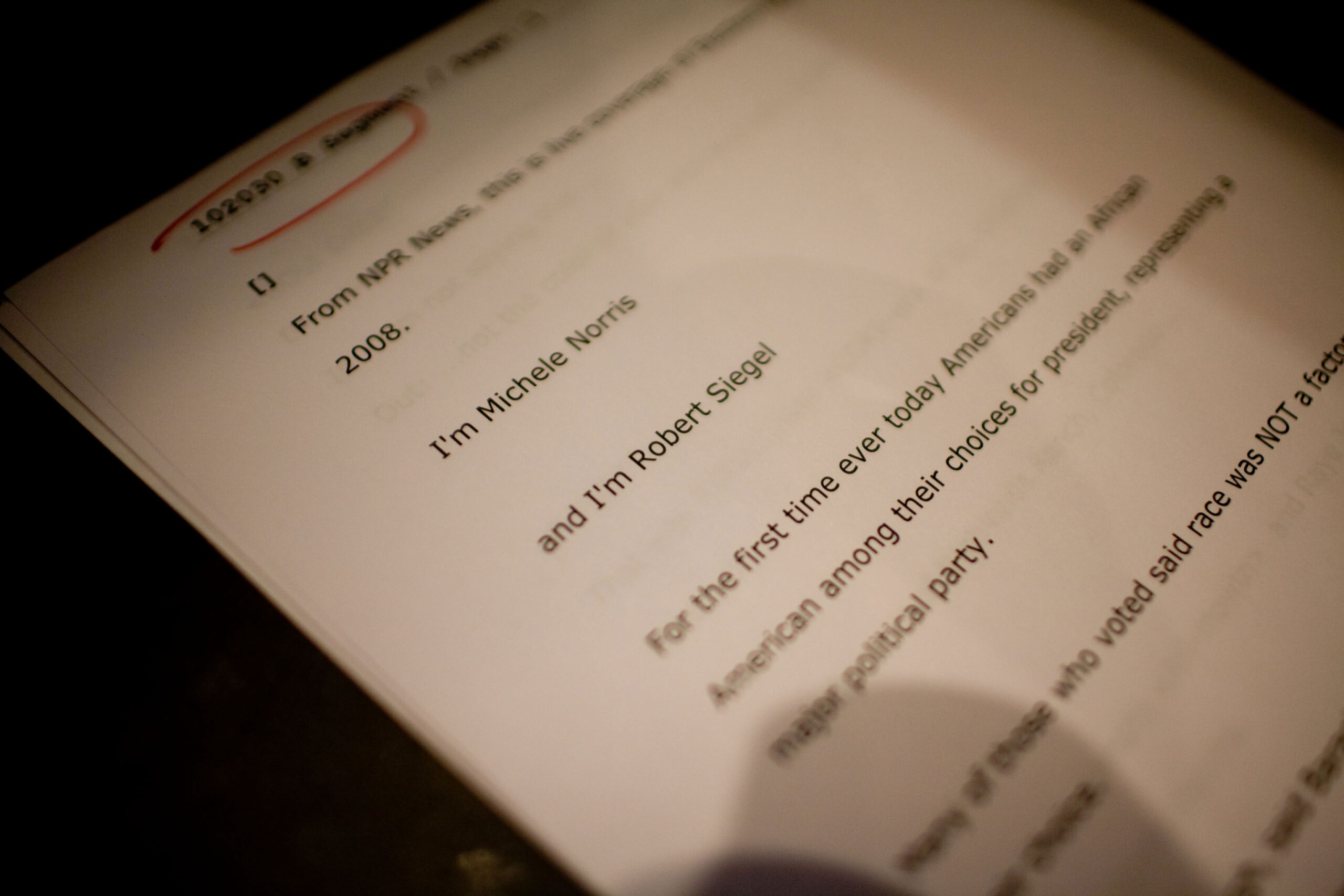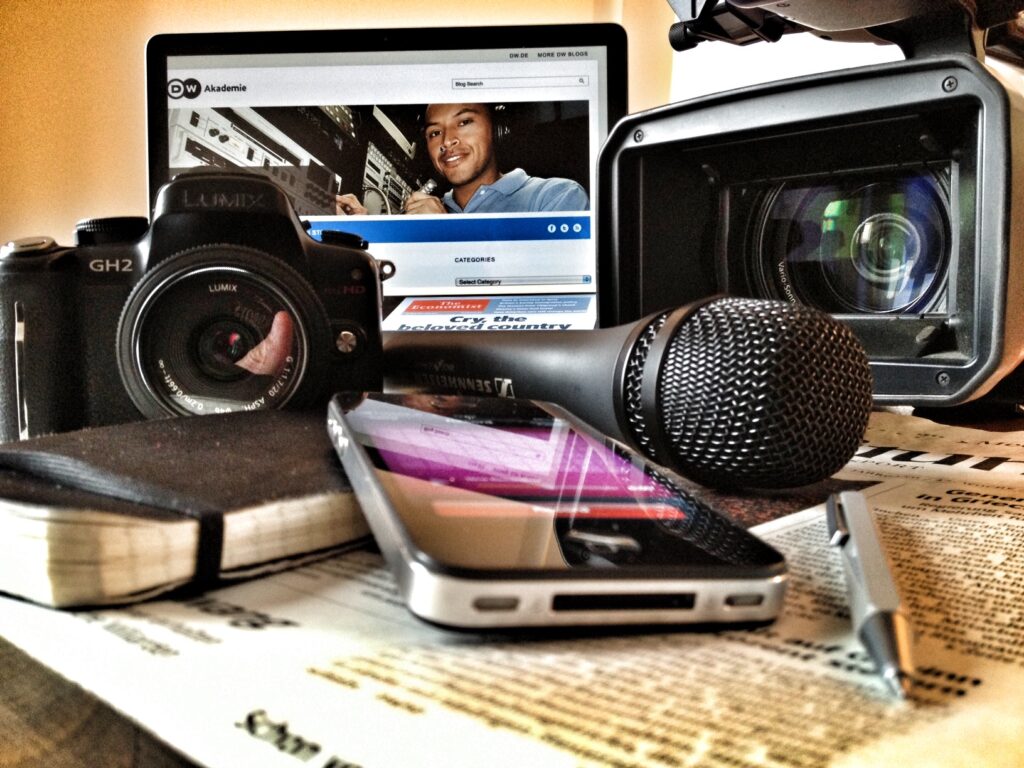If there’s anything that you’ll learn when being taught journalism in our digital age, it’s that being self-sufficient is the key to your success. Journalists are now required to do their own research, interviews, recordings, editing and writing and the more all-round experience you have, the more likely you are to be employed. What network wouldn’t love a low-maintenance, multi-skilled reporter that’ll cut costs? It’ll be pretty difficult to find any I assure you.
So what are the best things to do to improve your skills? Well, knowing how to write for different news outlets is a good start. Broadcast news is significantly different from printed news because it’s multi-sensory, so the audience can see and hear the news being told to them as opposed to reading it themselves. This requires quite a few formatting considerations so follow these guidelines and you’ll be well on your way to becoming the next Barbara Walters or Anderson Cooper.
Keep It Simple Stupid – KISS
Regardless of whether it’s radio or television broadcasting, the fact that the audience is hearing and/or seeing their news as opposed to reading it means they need to understand it instantly. Having the news be told to them saves them having to put in much effort to obtain it so it must be concise, using as little words to get to the point as possible. Make sure you’re answering the essential top 6 questions: Who, What, When, Where, How, Why in as little time as possible. A much simpler vocabulary also works for reaching a larger audience and keeping them engaged.
Short And Sweet
Generally, radio and television news should not have sentences that go over 25 words – especially when it comes to the ‘lead’ of the story. Read the story out loud and if you find yourself running out of breath to finish a sentence, that sentence is too long. In broadcast copy, sentences should be able to be read in one breath so break it up into two separate ones if you must.
Conversational
As much as showcasing your writing style through flair and an extensive vocabulary is welcomed in print news writing, when reading it out aloud, it can sound labored and clumsy. When broadcast writing, do it so it sounds conversational and like a real speech instead of a script. If it’s not a word you’d use when talking with someone you know, then don’t use it in this case either.
Use Active Voice
Using an ‘active’ voice is essential when writing broadcast news copy. In an active sentence, the subject is performing the action whereas in a passive one, the main subject is either doing nothing or has something done to them. For example, an active sentence would be: “Bobby burned the house down” as opposed to the passive sentence: “The house was burned down by Bobby”. Bobby is the main subject but in the passive sentence, it becomes an inanimate object – the house. An active sentence should always have a subject that is actioning a verb and not the other way around.
Attribution
Unlike print news, attribution comes first and generally begins the news story. Example: “Police report that a man was shot dead”, instead of “A man was shot dead, police reported.”
All of these guidelines apply to general broadcast news writing including radio and television. However, there are a few specific requirements for radio. These are as follows:
- Keep the story about thirty seconds in length
- Provide an interesting ‘tease’ that gives away enough information to engage the listener without repetition. A ‘tease’ is usually a comment related to the upcoming news ahead e.g. “Life without parole for serial killer John Cage. The details next, on 850FM news.”
- If the show is not airing live, it’s also important to consider the time of day and know when your listeners are going to be tuning in to that broadcast.
- Be concise, friendly but authoritative, snappy but remain eloquent.
- Radio doesn’t have the luxury of visuals so you must be descriptive. Try to add words that speak of sounds, sights, aromas, and whatever else helps setting the scene.
Formatting for written copy
- Double space everything and use a large enough font for easy reading.
- Round up all numbers. Numbers and figures are informative and are quite essential in relaying a story in print news, but in radio, it just confuses the listener. Example: 514 waterways should become “more than five hundred waterways”. The exception to this rule is if the exact number is a crucial part of the story. For instance, “Electricity prices will be raised to three dollars and forty-five cents next month…”
- Spell everything out in words like numbers or symbols. For example, instead of “$318” you’d write “Three hundred and eighteen dollars” or “Over three hundred dollars”.
- Abbreviations and acronyms are a no-no. Spell out words in full like “versus” or “United States” as opposed to “vs” or “U.S.”
- Underline any words that require a special emphasis. But use this sparingly, only for occasions where important clarifications need to be made. Example: “The legal age to buy alcohol is now twenty-one, not twenty-four.”
- Spell out pronunciations of difficult or long words. Example: “Prime Minister Izatoote (ee-za-TOO-tee) landed at LAX airport this morning.”
- Don’t use semicolons.
- Use dashes for long pauses
Broadcast news has always opened up the reach of its audiences to amazing new heights from its humble beginnings in print – not to mention the multiplication of this with the advent of new media. This is why simplicity is so crucial when writing for broadcast media because the audience needs to understand it regardless of their educational or cultural background. So along with basic vocabulary and concise sentences, make sure your writing is also objective, unbiased and politically correct. It needs to be inclusive and prioritize the need to strictly inform without subjectivity. With this in mind and using the guidelines shown above, you’ll conquer the field in writing for broadcast journalism in no time.
Develop an understanding of research processes, writing segments, and producing live newscasts with NYFA’s variety of broadcast journalism courses, workshops, and programs. Visit our Broadcast Journalism School page to learn more.



